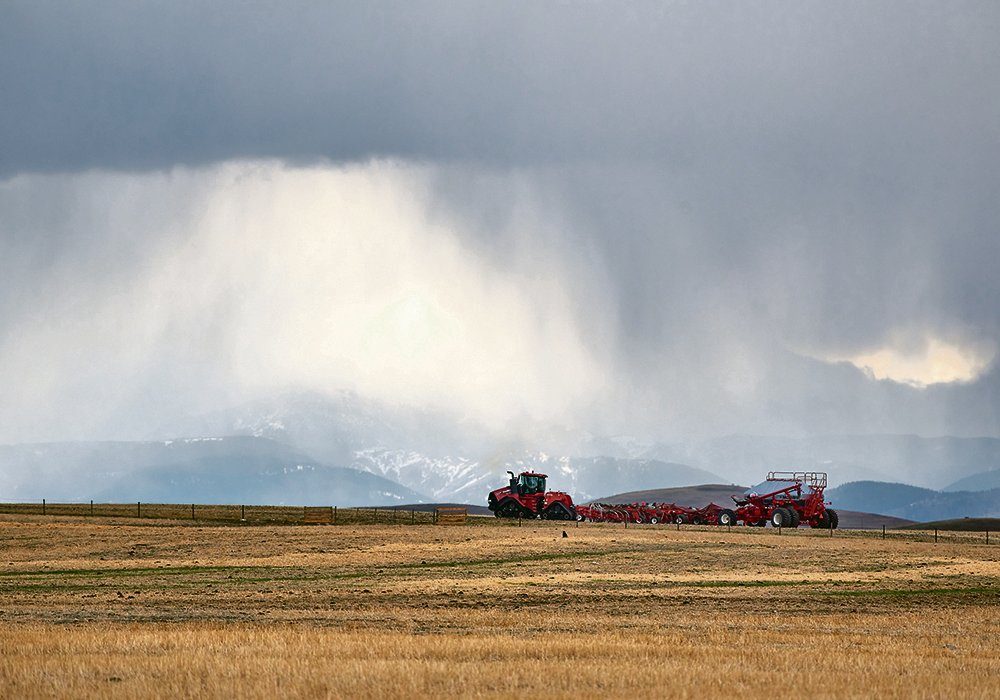Farm safety net overhaul unnecessary: report

Academics argue business risk management programs are working well and should not be reformed because of COVID-19
If farm groups are looking for arguments to back their calls for more pandemic-relief money and programs, they’d better not use a recent analysis by Alan Ker and Scott Biden of the University of Guelph.
They conclude that business risk management programs did not fail during the pandemic’s first year, farmers overall did fine and redesigning the farm safety net in response to the pandemic is unwarranted.
“Simply put, it is very difficult to make an argument for greater funds to be added to BRM programming,” say Ker and Biden in Risk Management in Canada’s Agricultural Sector in Light of COVID-19: Considerations One Year Later.
Not only did the safety net handle the pandemic so far, but any attempt to prepare for the next freak disaster probably wouldn’t work well because “introducing additional BRM programs to deal with Black Swan events like COVID-19 … are generally not efficient and almost always, by definition of a Black Swan event, miss the mark.”
The article, a follow-up to Ker’s article from last year that projected challenges the safety net might face as the pandemic rolled across Canada and the world, details early challenges of disruption, delay and shutdowns that affected early pandemic prices and income. However, it also notes that over the full year, both beef and hog farmers did not do markedly worse than the previous year, while crop farmers on average did better.
Not only did beef cattle returns only fall five percent from 2019, but hog returns fell only 1.5 percent and crop farming revenues increased 14 percent.
The BRM suite showed no signs of being drained with AgriInvest accounts growing to $2.4 billion, AgriStability participation dropping four percent and farm income being up about 22 percent, with overall household farm income increasing nine percent.
The academics express skepticism about farm group demands for increased BRM spending, especially considering farmers’ generally better financial position compared to other Canadians.
“The farm sector is certainly in a far better position than the general public to self-insure and financially absorb income downfalls caused by COVID-19 as opposed to requiring additional financial support from the public,” Ker and Biden write in the article, published in the current issue of the Canadian Journal of Agricultural Economics.
“Churchill’s quote of ‘never let a good crisis go to waste’ appears to be the modus operandi for Canadian farms with respect to lobbying efforts for more public funds.”
The authors support the argument made previously by Ker and Ryan Cardwell of the University of Manitoba that designing programs for freak circumstances would probably be a bad idea.
“Governments always have the option to deal with Black Swan events in real time as they arise. This is almost always most efficient, as Black Swan events cannot be predicted as to their specific form nor their timing.
“Furthermore, the cost associated with preparing for Black Swan events can be very pronounced, quite distortionary and can reduce efficient allocation of resources during normal times.”
While farm groups’ calls for additional funding aren’t loud now, they were early in the pandemic as packing plants shut down, agricultural workers were prevented from coming to Canada and some predicted massive disruptions to agricultural exports.
The authors note the Canadian Federation of Agriculture’s call for $2.6 billion in “first phase” disaster funding above and beyond existing BRM money and strongly worded warnings from Grain Farmers of Ontario that many Canadian farmers faced failure.
The Canadian Cattlemen’s Association and Canada Pork Council also pled for amendments to programs such as AgriStability so they could be more easily triggered.
Ker and Biden detail amendments to the BRM suite that helped many farms receive funding they were otherwise not eligible for, including AgriInsurance coverage for some labour shortages.
Forms of feed assistance for farmers forced to hold onto cattle and hogs were provided.
They also note the extra loan credit allowed to Farm Credit Canada, the extension to the Advanced Payments Program and specific federal funding for pandemic-related temporary worker costs.
They take notice of speeded-up payments to dairy farmers for trade deal compensation, despite that sector being generally flush compared to other farmers.
“Ironically, the supply managed sectors have some of the highest farm incomes as well as highest household wealth of any farm sector, yet received the greatest financial support,” they observe.
Beyond any agriculture-specific programs in Canada, the biggest government-cash contributor to Canadian farmers’ generally OK 2020 was probably the massive spending of money by governments around the world to keep their citizens solvent. Consumers with money were able to keep spending, keeping demand for food strong.
As well, governments’ decision to keep borders open and avoid “border thickening” allowed trade in most items to continue, which was vital for a country that exports much of what it produces.
U.S. farmers received much more direct aid from their government during the first year of the pandemic, but Ker and Biden say Canadian farmers are still competitive in the global marketplace.
They find little justification for specific re-engineering of the BRM programs due to COVID-19, nor for extra emergency funding.
“COVID-19 exposed no vulnerabilities in BRM programming and therefore we see no need for additional BRM funding despite continuous calls to the contrary from the farm sector,” Ker and Biden said.

